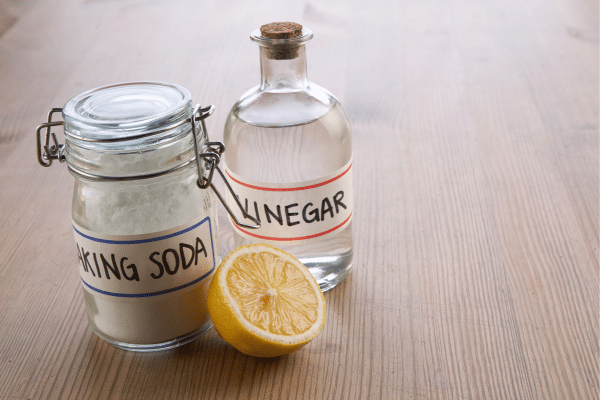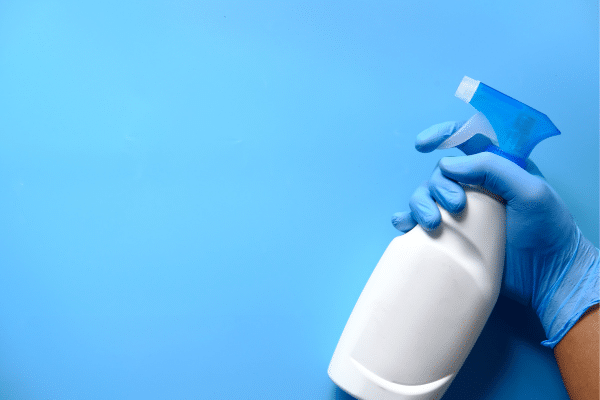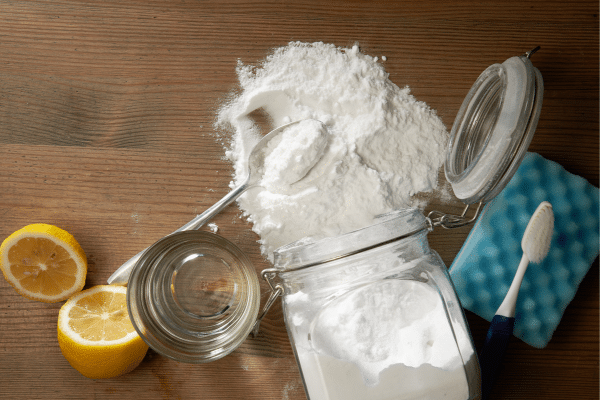In recent years, there’s been a significant shift towards natural and eco-friendly cleaning solutions. This trend is driven by the growing awareness of the health and environmental benefits that these alternatives offer over their commercial counterparts. Making your own natural cleaning products at home is not just a step towards a more sustainable lifestyle but also a cost-effective way to maintain a clean and healthy living space. This guide aims to equip readers with the knowledge and recipes needed to create effective, natural cleaning solutions, ensuring a safer environment for families and the planet.
Contents
Understanding The Basics Of Natural Cleaning Ingredients

The journey into homemade natural cleaning products begins with familiarizing oneself with the core ingredients. Vinegar, baking soda, and lemon are staples in the realm of natural cleaning, each possessing unique properties that make them effective for various tasks. Vinegar acts as a potent disinfectant and deodorizer, baking soda is an excellent abrasive cleaner and also deodorizes, while lemon not only adds a fresh scent but also has antibacterial properties. Understanding how these and other natural ingredients work is crucial for crafting effective cleaning solutions tailored to specific needs.
The choice of ingredients is not merely about their cleaning power; it’s also about their safety and compatibility with different surfaces. For instance, while vinegar can clean glass or remove limescale, its acidity might damage natural stone surfaces. Similarly, lemon’s citric acid is wonderful for cutting through grease but can also etch delicate materials. Thus, knowing which natural ingredients are safe and effective for each cleaning task is essential for avoiding damage to surfaces and ensuring a thorough clean.
The Essential Tools And Containers

Embarking on the creation of homemade cleaning products requires not just the right ingredients, but also the appropriate tools and containers. Essential items include spray bottles for liquid cleaners, jars for powders, measuring cups for precise ingredient ratios, and funnels for mess-free transfers. Choosing quality tools that can be reused time and again is not only economical but also reduces waste, aligning with the eco-friendly ethos of natural cleaning.
Repurposing household items for storage and application further enhances sustainability efforts. Old glass jars, for example, can be cleaned and used to store homemade powders or pastes, while spray bottles from store-bought cleaners can be reused for DIY solutions after a thorough cleaning. This approach not only saves money but also minimizes the environmental footprint by reducing the demand for new plastics and contributing to a circular economy.
Recipes For Everyday Cleaning Needs

A cornerstone of any natural cleaning toolkit is a versatile all-purpose cleaner. A simple yet effective recipe involves mixing equal parts of water and vinegar, adding a squeeze of lemon juice for extra cleaning power and a pleasant scent. This solution can safely clean most surfaces, from countertops to bathroom tiles, effectively cutting through grime and disinfecting areas prone to bacteria buildup.
For sparkling windows and mirrors, a streak-free shine is achievable with a natural glass cleaner made from diluted vinegar and water, with a dash of rubbing alcohol to speed up drying and prevent streaks. Adding a few drops of essential oil can leave rooms smelling fresh after cleaning. This recipe not only mirrors the effectiveness of commercial glass cleaners but also eliminates the harsh chemicals and strong scents often associated with them, making it a healthier choice for homes.
Specialized Cleaning Solutions

A natural wood polish not only brings out the beauty of wooden furniture but also protects it without the use of harsh chemicals found in commercial polishes. A simple recipe combines olive oil for conditioning the wood, lemon juice for cleaning, and a bit of vinegar to cut through any buildup. This mixture, when applied with a soft cloth, leaves wooden surfaces shining and nourished. Adjustments can be made to the oil and vinegar ratio depending on the type of wood and the desired finish, allowing for customization that matches specific furniture care needs.
For areas requiring disinfection, such as kitchen countertops and bathroom surfaces, a natural disinfectant spray is indispensable. Combining high-proof alcohol with water, a bit of hydrogen peroxide, and essential oils like tea tree or lavender can create a powerful disinfectant that kills germs without leaving harmful residues. This solution is especially valuable in homes with young children or pets, where reducing exposure to toxic substances is a priority. Regular use ensures surfaces not only look clean but are also free from bacteria and viruses, promoting a healthier living environment.
Tackling Tough Cleaning Jobs

Heavy-duty cleaning tasks, like removing baked-on grime from ovens or soap scum from bathtubs, require a robust solution. A paste made from baking soda, a little water, and a few drops of dish soap can tackle even the toughest jobs. Applied to the problem area and left to sit, this mixture loosens grime, making it easier to scrub away without the need for toxic oven cleaners or bleach-based products. This approach not only preserves the integrity of the surfaces but also ensures that the home remains free from harsh chemical smells.
Carpets and upholstery often harbor stains and odors that are difficult to remove. A natural approach involves sprinkling baking soda over the affected area, letting it sit to absorb odors, then vacuuming it up. For tougher stains, a mixture of vinegar and water applied directly to the stain and blotted with a clean cloth can lift away spills without damaging fabrics. These methods are safe for most types of carpets and upholstery, offering a non-toxic alternative to commercial cleaners that often leave behind residues and strong scents.
Maintenance And Safety Tips

Labeling homemade cleaning products is not only important for identifying contents but also for ensuring safety, especially in households with children or pets. Clear labels with ingredients and usage instructions help prevent accidents and misuse. Storing these products in a secure location further safeguards against accidental ingestion or contact, mirroring safety protocols advised for commercial products.
The efficacy of DIY cleaners can be maintained through proper storage and regular preparation of small batches to ensure freshness. Natural ingredients, while effective, often lack the preservatives found in store-bought cleaners, limiting their shelf life. By understanding the lifespan of each product, one can avoid the ineffectiveness or spoilage that might occur over time. This proactive approach guarantees that the natural cleaning solutions remain as potent as the day they were made.
Beyond Cleaning: Natural Air Fresheners And Deodorizers

Creating a pleasant home environment extends beyond cleanliness to include how the space smells. Natural air fresheners made with essential oils and water can replace synthetic fragrances, offering a customizable and chemical-free option. Whether diffused, sprayed, or used in gel form, these natural scents can invigorate a room, eliminate odors, and even offer therapeutic benefits, depending on the oils chosen.
Deodorizing spaces naturally is another aspect of maintaining a fresh home. Solutions like baking soda-based deodorizers or homemade sachets filled with dried herbs and flowers can absorb and neutralize odors in areas such as closets, drawers, and even refrigerators. These simple yet effective methods ensure that the home not only looks clean but also feels and smells inviting, without the use of artificial fragrances that can irritate allergies or contribute to indoor air pollution.
The Bottom Line
The transition to making and using natural cleaning products is a step towards a healthier, more sustainable lifestyle. The benefits extend beyond personal health and environmental impact, reaching into economic savings by utilizing simple, readily available ingredients. With a range of recipes and tips at their disposal, individuals can effectively clean their homes, safe in the knowledge that they are not exposing themselves or the planet to harsh chemicals. Starting with a few basic recipes and gradually incorporating more into the cleaning routine can lead to a significant reduction in reliance on commercial products, fostering a cleaner, greener home environment.


